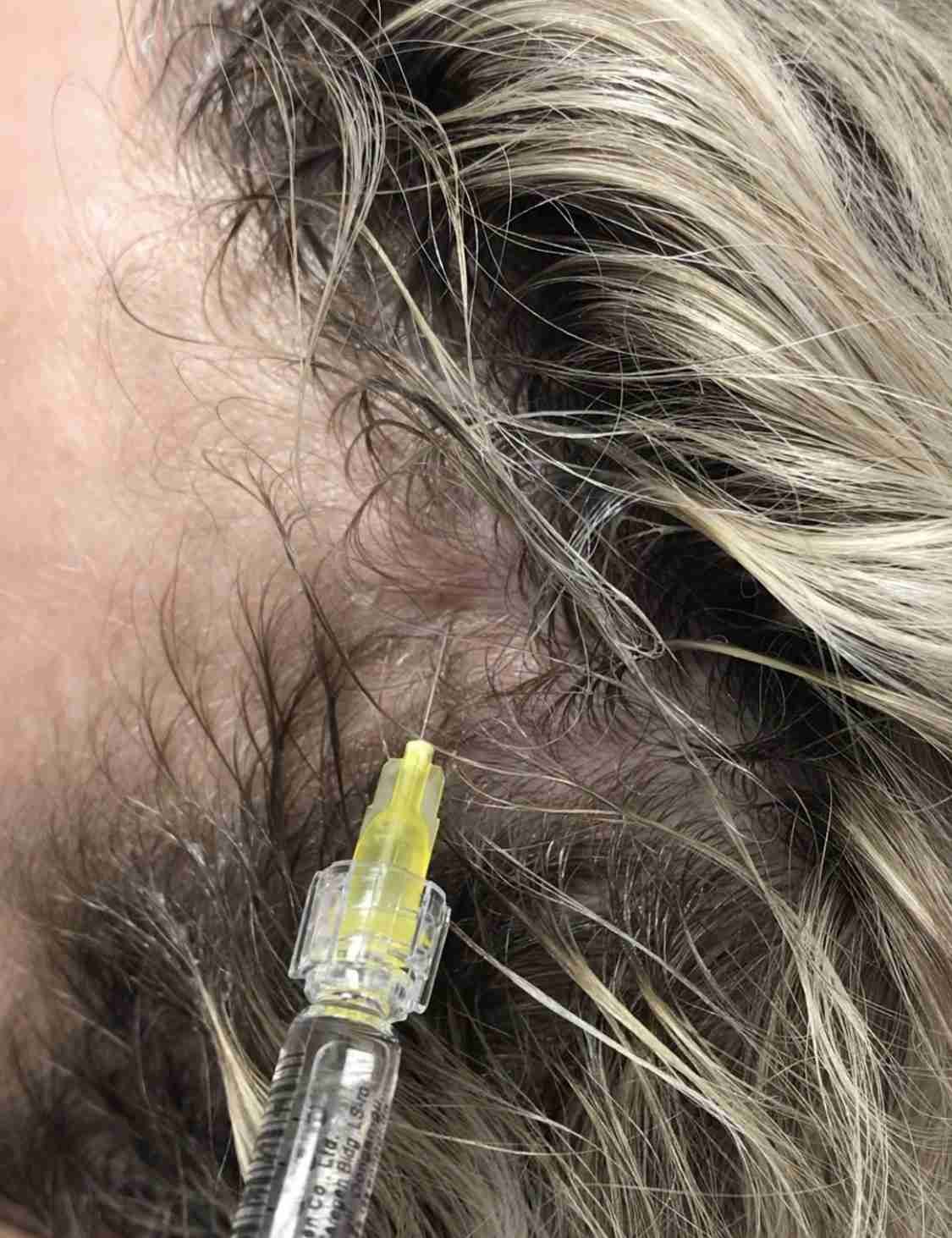Acne if not managed, has the potential to leave long lasting pigmentation and acne scars. These can be stubborn, and no single treatment is best for everyone.
Scars are formed when a spot penetrates the skin deeply and damages the tissues beneath it.
Before getting treatment for acne scars, it’s important to know what type they are. Each type responds to treatment differently, and some treatments are better for particular types than others.

Discolouration left behind after a spot has gone isn’t neccesarilly a scar. The purple, red, or brown marks will fade over a few months on their own, but can be helped with treatments.
Types of Acne Scars
Atrophic or depressed acne scars

Atrophic scars are most common on the face. A depressed scar sits below the surrounding skin. They’re formed when not enough collagen is made while the wound is healing. There are three types of atrophic scars:
Boxcar
These are wide, U-shaped scars that have sharp edges. They can be shallow or deep. The shallower they are, the better they respond to skin resurfacing treatments. Microdermabrasion and gentle peels are great for almost all skin types.
Laser resurfacing has to be done cautiously they can cause more scarring and pigmentary changes in darker skin tones, like post-inflammatory pigmentation. It’s best to pretreat darker skin types with a 4 percent hydroquinone for at least 4-6 weeks prior to starting these treatments.
Ice pick
Ice pick scars are narrow, V-shaped scars that can go deep into the skin. They look like small round or oval holes, like a chickenpox scar. These are the most difficult scars to treat because they can extend far under the surface of the skin.
Rolling
These are wide depressions that have rounded edges and an irregular, rolling appearance.
Hypertrophic or raised acne scars
These scars will be most common with chest and back acne. They stand above the surface of the surrounding skin and are caused by too much collagen during healing.
Firstly, before starting any treatment for acne scars, it’s important to be seen by a dermatologist or a healthcare professional. They can help you determine the best method to reduce the appearance of your scars and also make sure that the marks on your skin are actually scars and not another condition.
Skin Types
Additionally, your skin tone can also be a factor. For example, for darker skin types, deeper skin laser treatments will not be recommended due to higher chances of scarring and pigmentation.
Treatment Approaches
Undoubtably, one or a combination of the following approaches are beneficial and accelerate appearance of your skin, depending on your scar type, your skin type and the severity of the scarring.
- Home skin care. Using sunscreen will limit the contrast between unscarred skin and a scar. Medicated creams, containing, lactic acid, retinoids or salycilic acid, definitely help too.
- Soft tissue fillers. Injecting dermal filler under the skin can plump the skin over indented scars. The goal is to make the scars less noticeable. Results are temporary, therefore, repeat treatments are need to be completed to retain the effect. This method has little risk of changes in skin colour.
- Laser resurfacing. This approach is increasingly popular and is performed on scars. This technique has an increased risk of side effects for people with darker skin or a history of keloids.
- Micro Dermabrasion. Your therapist will be removing the top layer of skin with a rapidly rotating brush or other device. Surface scars may be completely removed, and deeper acne scars may appear less noticeable. Potential severe side effects include scarring and changes in skin colour.
- Chemical peel. The practitioner starts by applying chemical solution to the scar tissue to remove the top layer of skin and minimise the appearance of deeper scars. You can repeat mild and medium peels to maintain results. You can have only one deep peel. Potential side effects include changes in skin colour, especially with deep peels used on dark skin.
- Microneedling. A safe needle device will passed over the skin to begin stimulating collagen formation in the underlying tissue. It’s a safe, simple and effective technique for acne scarring. Unlike other treatments there is minimal risk of discolouring the skin. Results are subtle, and repeat treatments are necessary.
Treatments can help
Acne scars can be frustrating, however, there are many treatments that can make them less noticeable. Most scars are permanent, but a healthcare professional will try and help you find the right treatment to start reducing the appearance of your scars.
The best way to treat an acne scar is to prevent acne in the first place or manage it well.
You’re less likely to develop acne scars if there have been less break outs.
Avoid picking, popping, or squeezing any breakout, no matter how tempting, prevents irritating the skin and damaging the underlying tissue, which can lead to scars.


